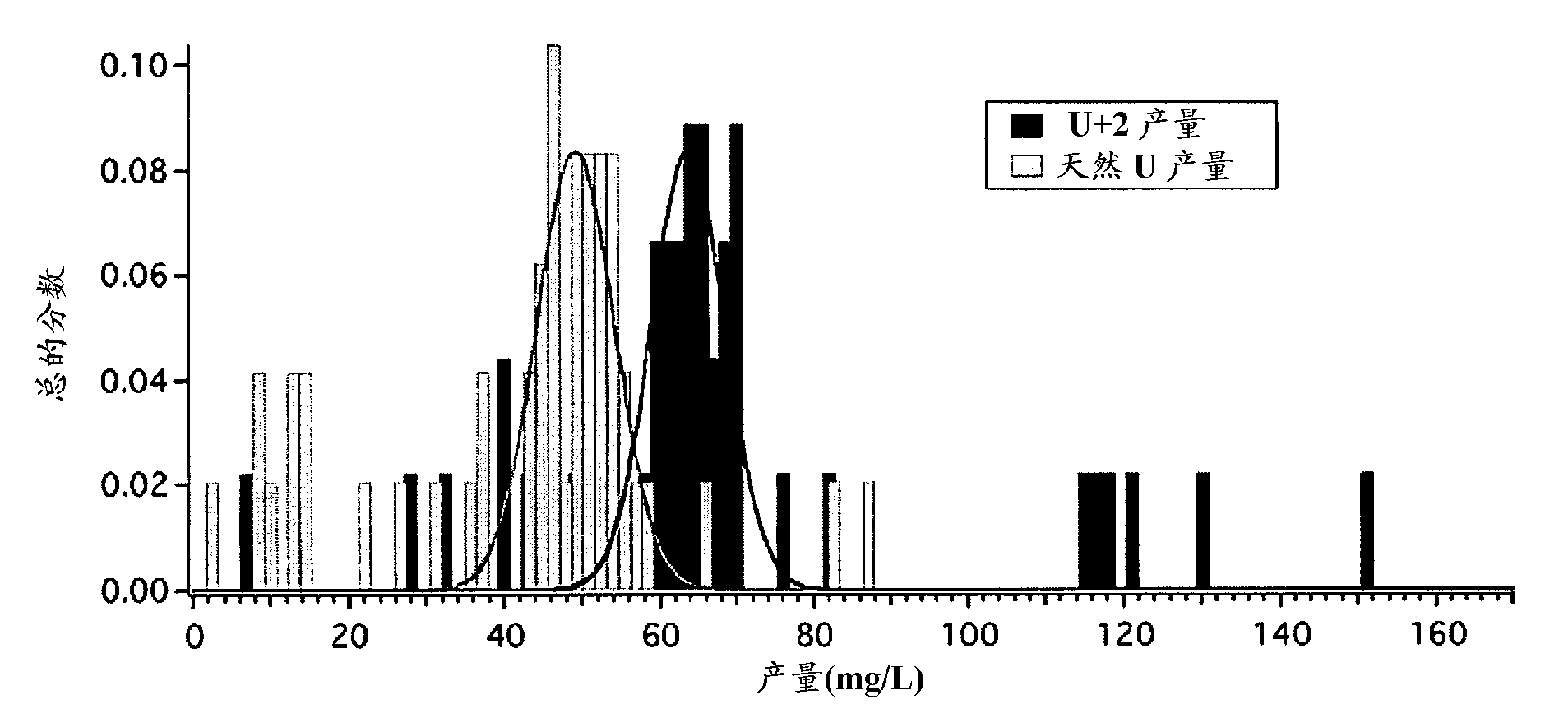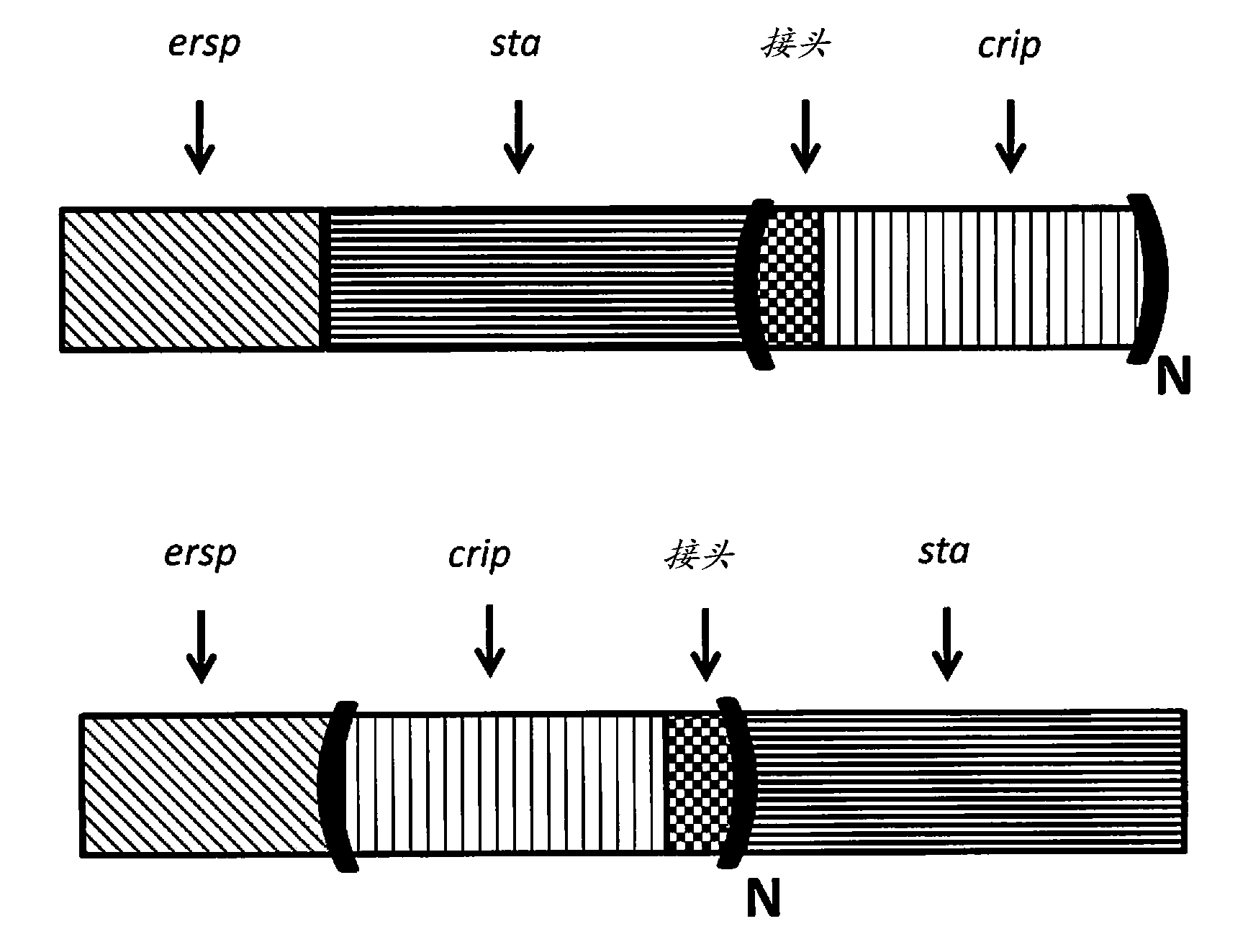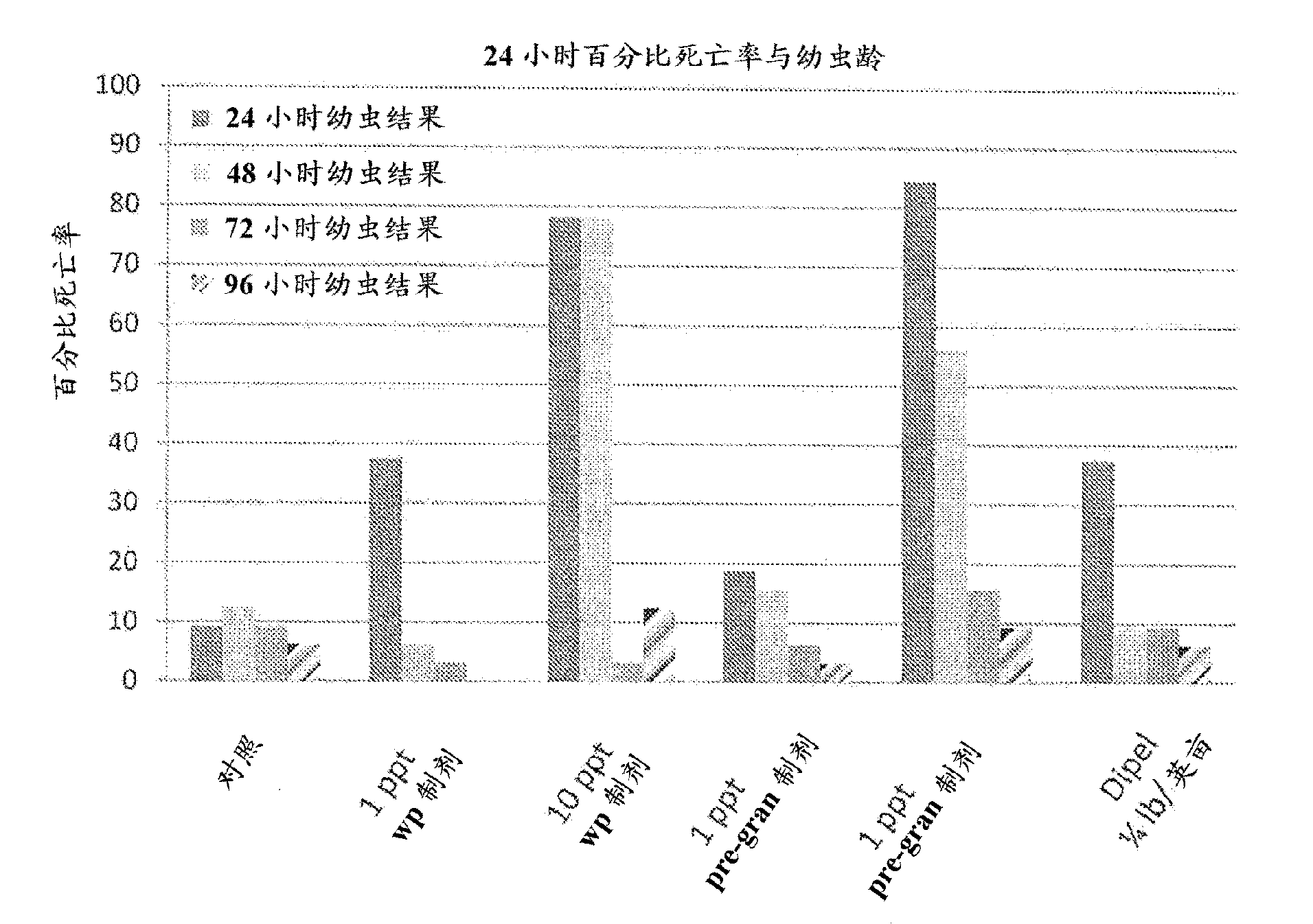Toxic peptide production, peptide expression in plants and combinations of cysteine rich peptides
A cysteine, cystine knot technology for use in the fields of toxic peptide production, peptide expression in plants and combination of cysteine-rich peptides
- Summary
- Abstract
- Description
- Claims
- Application Information
AI Technical Summary
Problems solved by technology
Method used
Image
Examples
Embodiment 1
[0244] Expression comparison between two transient plant expression systems .
[0245] Transient plant transformation technology was used to rapidly optimize ICK motif protein expression ORF for plant expression. The technique of Agrobacterium infection with plant viral vectors was used here for transient plant transformation due to its high efficiency, simplicity and cheapness. Here, two viral transient plant expression systems are evaluated for ICK motif protein expression in plants. One is the tobacco mosaic virus overexpression system (TRBO, Lindbo JA, Plant Physiology, 2007, V145: 1232-1240). The TRBO DNA vector has a T-DNA region for the Agrobacterium infection method, which contains the CaMV 35S promoter driving the expression of tobacco mosaic virus RNA without the gene encoding the viral coat protein. Another viral transient plant expression system is the FECT expression system (Liu Z and Kearney CM, BMC Biotechnology, 2010, 10:88). The FECT vector also contains ...
Embodiment 2
[0266] Transient expression of ICK motif proteins in tobacco leaves is accompanied by accumulation in distinct subcellular targets .
[0267] Plant-expressed ICK motif proteins need to accumulate to a certain level in plants to effectively protect plants from pests. The accumulation level of plant-expressed ICK-motif proteins can be influenced by their ultimate localization in plant cells. In this example, we investigated the effect of different subcellular localizations of plant expressed ICK motif proteins on protein accumulation levels in plants (using the FECT transient plant expression system). In this example, three subcellular targets were studied, the plant cell wall apoplast (APO), endoplasmic reticulum (ER) and cytoplasm (CYTO).
[0268] The APO-directed ICK motif protein expression ORF was designed to encode a series of translationally fused structural motifs, which can be described as follows: N'-ERSP-Sta-L-ICK-C'. The ICK motif protein in this study was U-ACTX...
Embodiment 3
[0283] Alternative signal peptides for expression of ICK motif proteins in plants .
[0284] Since ER signal peptides can function at the protein expression level, two other ERSPs were tested using the FECT expression system described in the previous examples. Two ERSP candidates are the tobacco extensin signal peptide, abbreviated "E" in this study (Memelink et al., the Plant Journal, 1993, V4: 1011-1022), and one of its variants is abbreviated "E*" (Pogue GP et al., Plant Biotechnology Journal, 2010, V8: 638-654). Their amino acid sequences are listed below (N' to C', one-letter code, non-identical residues are indicated in bold):
[0285] Extensin signal peptide (EMGKMASLFA SL LVVLVSLSLASESSA (SEQ ID NO: 18)
[0286] Extensin signal peptide variant (E*): MGKMASLFA TF LVVLVSLSLASESSA (SEQ ID NO: 19)
[0287] The DNA sequence encoding E was designed for tobacco expression as follows:
[0288] ATGGGTAAGATGGCTTCTCTGTTTGCTTCTCTGCTGGTTGTTCTGGTTCTCTGTCTCTGGCTTCTGAATCTTCT...
PUM
| Property | Measurement | Unit |
|---|---|---|
| molecular weight | aaaaa | aaaaa |
| molecular weight | aaaaa | aaaaa |
| molecular weight | aaaaa | aaaaa |
Abstract
Description
Claims
Application Information
 Login to View More
Login to View More - R&D
- Intellectual Property
- Life Sciences
- Materials
- Tech Scout
- Unparalleled Data Quality
- Higher Quality Content
- 60% Fewer Hallucinations
Browse by: Latest US Patents, China's latest patents, Technical Efficacy Thesaurus, Application Domain, Technology Topic, Popular Technical Reports.
© 2025 PatSnap. All rights reserved.Legal|Privacy policy|Modern Slavery Act Transparency Statement|Sitemap|About US| Contact US: help@patsnap.com



